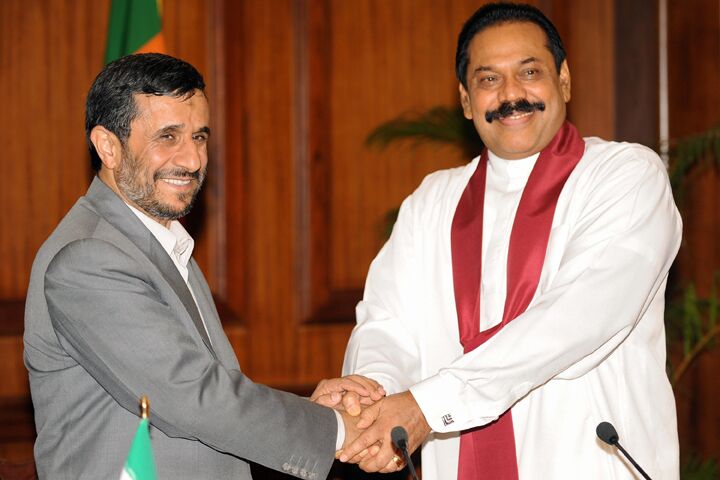
Iran Looks East
Iran’s regional influence steps up a notch this week as Iranian President Mahmoud Ahmadinejad takes a quick trip to Pakistan, India and Sri Lanka. Here, Iran will increase its political, economic and cultural ties with the United States’ most important allies in the region.
The biggest item on the agenda is the proposed Iran-Pakistan-India pipeline. This $7.5 billion program would transport Iranian gas through Pakistan and into India. China is also looking to join the project.
Pakistani and Indian energy ministers signed an agreement over the pipeline last week, and a final agreement is expected to be signed soon.
All this cooperation comes amid strong U.S. opposition. Nevertheless, India and Pakistan—American allies—are expected to sign the deal with Iran, a U.S. enemy.
In Pakistan, Ahmadinejad met with President Pervez Musharraf and Prime Minister Yousuf Raza Gilani on Monday. It is his first-ever visit to Pakistan. As well as discussing the pipeline, Iran agreed to provide Pakistan with 1,100 megawatts of electricity to help it overcome a power shortage.
Ahmadinejad’s visit to India on Tuesday comes during a week-long festival of Iranian culture, highlighting the historical ties between the two nations. According to the Times of India,
During the five-hour visit, India’s focus will be on the business side of the relationship with Iran. India will ask for more energy business with Iran, while keeping politics to a bare minimum in the discussions. India will also ask for more energy investment in Iran, mining and exploration as well as downstream production possibilities.
Iran also signed memorandums of understanding on Monday promising to invest heavily in Sri Lanka, pledging to finance a dam project and a hydroelectric power plant, and develop the production capacity of its only oil refinery, a total investment of $1.5 billion. Tehran plans to expand its ties with Sri Lanka through “expanding tourism, educational assistance, an employee exchange program, supplying vessels for Sri Lanka’s shipping industry, among others,” according to Asia Times.
“It is hoped that today’s visit would open a new chapter in the relations between Sri Lanka and Iran which already goes back deep in history into the time of the Persian kingdom, and underline the solidarity between the two nations,” wrote one of Sri Lanka’s national newspapers.
Sri Lanka is a great strategic gateway—a crossroad guarding the sea traffic flowing from Europe through Suez, from the oil-rich Middle East to Southeast Asia.
These visits show just how little influence the U.S. has on its “allies.” They have no problem welcoming one of America’s worst enemies as a close partner and strengthening Iran’s clout in the area. The U.S. certainly cannot count on Pakistan, India or Sri Lanka to help contain Iran.
The U.S. faces similar problems in Afghanistan. It cannot hope to begin to control it without the help of at least one if not two of Afghanistan’s most powerful neighbors. Here, especially, the U.S. needs Pakistan as an ally, but already that alliance is slipping away. A Pakistan working with Iran, however, would be even worse than a Pakistan that merely refuses to work with the United States.
For the Trumpet’s cutting-edge forecast on Iran’s rise and where it is leading, read The King of the South by editor in chief Gerald Flurry.
